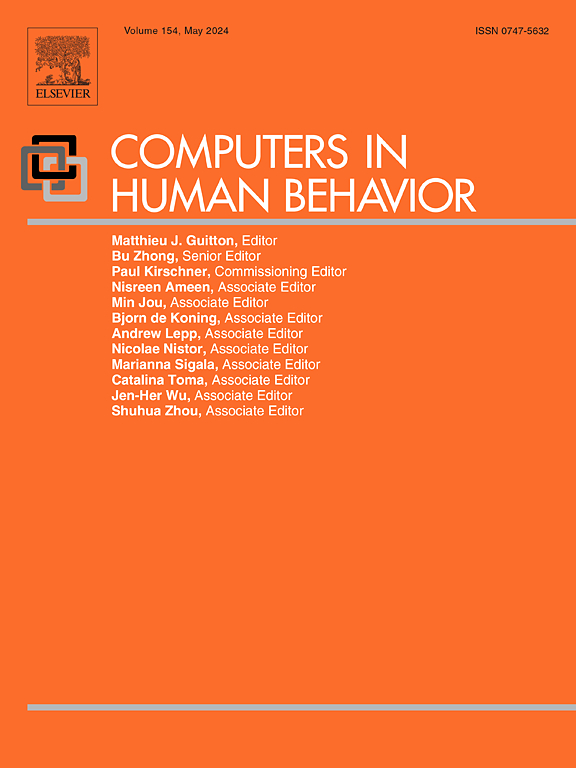Rest assured: the influence of chatbots’ assurance statements and service outcome personalization on user data management
IF 8.9
1区 心理学
Q1 PSYCHOLOGY, EXPERIMENTAL
引用次数: 0
Abstract
Data-driven services are becoming an ever more vital part of the business landscape, with chatbots an integral component of this change. Functioning as a longstanding barrier to the efficacy of personalized services, however, are user concerns surrounding data management that culminate in managerial challenges such as the Personalization-Privacy paradox (i.e., where informing users about data management practices in personalized services heightens privacy concerns and reduces willingness to disclose). In the current paper, across two experiments, we tackle this paradox by manipulating privacy assurance statements made by the chatbot (i.e., short statements at the start of the service interaction) inspired by Communication Privacy Management theory and service personalization (i.e., depth of medical diagnosis at the services conclusion). Using the Elaboration Likelihood Model as our core theoretical anchoring, we examine direct effects on user data management outcomes (privacy concerns, willingness to disclose) and collaboration with the chatbot (working alliance), as well as indirect effects via the mediator perceived information control to discern the activation of peripheral or central route to persuasion. Results show that when service personalization is low, privacy assurance statements activate the peripheral route as users make a surface assessment of their perceived degree of information control. When service personalization is high, however, they additionally activate the central route as users weigh the information delivered at the start of the service interaction with that delivered at the services conclusion. We support this theoretical rationale with calculations of direct, indirect, and conditional indirect effects alongside tests of equivalency.
放心:聊天机器人的保证声明和服务结果个性化对用户数据管理的影响
数据驱动的服务正在成为商业环境中越来越重要的一部分,而聊天机器人是这一变化不可或缺的组成部分。然而,个性化服务效能的长期障碍是用户对数据管理的关注,这些关注最终导致了个性化-隐私悖论等管理挑战(即,告知用户个性化服务中的数据管理实践会增加隐私关注并降低披露的意愿)。在本文中,我们通过两个实验,通过操纵聊天机器人在通信隐私管理理论和服务个性化(即服务结束时的医疗诊断深度)的启发下做出的隐私保证声明(即服务交互开始时的简短声明)来解决这一悖论。使用精化可能性模型作为我们的核心理论锚定,我们研究了对用户数据管理结果(隐私问题,披露意愿)和与聊天机器人(工作联盟)合作的直接影响,以及通过中介感知信息控制来辨别外围或中心路线的激活的间接影响说服。结果表明,当服务个性化程度较低时,隐私保障语句激活了外围路由,用户对其感知的信息控制程度进行了表面评估。然而,当服务个性化程度很高时,它们会额外激活中心路由,因为用户会权衡服务交互开始时传递的信息与服务结束时传递的信息。我们通过计算直接、间接和条件间接效应以及等效性测试来支持这一理论基础。
本文章由计算机程序翻译,如有差异,请以英文原文为准。
求助全文
约1分钟内获得全文
求助全文
来源期刊

Computers in Human Behavior
Multiple-
CiteScore
19.10
自引率
4.00%
发文量
381
审稿时长
40 days
期刊介绍:
Computers in Human Behavior is a scholarly journal that explores the psychological aspects of computer use. It covers original theoretical works, research reports, literature reviews, and software and book reviews. The journal examines both the use of computers in psychology, psychiatry, and related fields, and the psychological impact of computer use on individuals, groups, and society. Articles discuss topics such as professional practice, training, research, human development, learning, cognition, personality, and social interactions. It focuses on human interactions with computers, considering the computer as a medium through which human behaviors are shaped and expressed. Professionals interested in the psychological aspects of computer use will find this journal valuable, even with limited knowledge of computers.
 求助内容:
求助内容: 应助结果提醒方式:
应助结果提醒方式:


